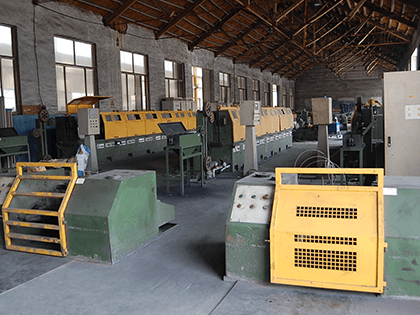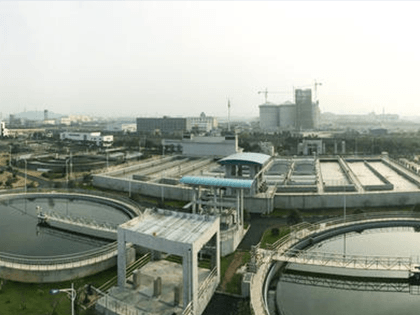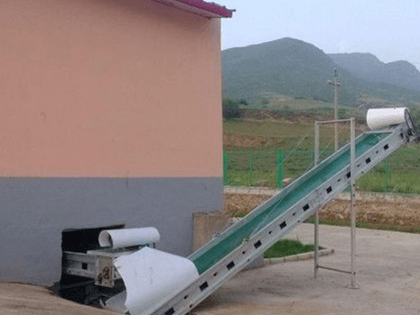Analysis of sludge disposal situation in our country
Author: Taida machine Release time:2016-08-24
Reading guidance:Sludge disposal technology just takes off in china. Compared with developed countries, we lags behind much. Among existing sewage disposal equipment, stable sludge disposal facilities can not reach to
Sludge disposal technology just takes off in china. Compared with developed countries, we lags behind much. Among existing sewage disposal equipment, stable sludge disposal facilities can not reach to 25%. Complete disposal process and matching equipment can not reach to 10%. In a small number of sludge digestion tank can normally run very little, some do not run. Most sewage treatment plant is to be sent to landfill or direct exposure to landfill, resulting in two pollution.
According to relevant statistics, landfill and incineration account for 5%; composting accounts for 7%; landfill method is final disposal method for sludge. Landfill accounts for 85%;
At present, there are following disposal methods for sludge in our country: 1. Deep dehydration cooperates with landfill; nutrients can not be applied (nutrients are not damaged); it is difficult to utilize clean energy; it is hard to realize low carbon emission; 2. Dehydration cooperates with incineration and lime-ash; nutrients can not be utilized (nutrients get damaged); no energy is conveyed; if it is hard to realize balance, more energy should be input; can not realize low-carbon emission; carbon dioxide for incineration is not neutral carbon; 3. Aerobic fermentation of land using (agricultural) no output energy, input must; carbon dioxide is carbon neutral, basic low carbon, carbon and nitrogen ratio, oxygen, humidity control improper will have methane discharge. Although there is no energy recovery, but can increase circulating levels of the nutrients, indirect reduction of carbon emissions produced by chemical fertilizer production and basically belongs to the low carbon emissions; 4. Anaerobic digestion of land use (agricultural) is a national recommended sludge treatment and disposal technology route. The sludge such as the use of anaerobic digestion of land use (agricultural) technical route for disposal, the dynamic increase 3% to 10% of the amount of nutrient matter; will produce 25 billion m3 methane gas as a clean energy, generating 40 million; and other route may directly reduce carbon emissions 1 500 million T, indirect reduction of 400 million tons of carbon emissions and have a huge environmental and economic benefits, should become the main technique route of sludge treatment and disposal.
Sludge disposal is divided into two stages. Generally, sludge should be condensated and dehydrated first in order to control the moisture content about 80%; then, transport sludge out for incineration, landfill, composting and building materials; in traditional sludge disposal, sludge disposal cost accounts for 20% to 50% of total running cost. Dehydration disposal is an important part of sewage disposal. Previous dehydration and equipment regard belt press filter and centrifugal dehydrator which can only reduce the moisture content from 97% to 80%. To further improve sludge dehydration rate is the bottleneck of traditional mechanical dehydration technology. At present, the domestic sludge treatment problems mainly in the following three points: (1) due to funding, technology, policy and land, and many other reasons to handle the work of serious lag, resulting in severe sludge "backlog"; (2) processing facilities and technical standards is low, can not meet the current needs; (3) over reliance on enterprises under the market mechanism, inadequate supervision and guarantee of the local government, the ability to deal with sudden environmental pollution incidents is not strong.
The problems in sludge disposal can be summarized into two aspects, technical problem and management problem: 1. Technical problem. In the process of sludge treatment, the dehydration effect is not good, resulting in the deterioration of the environment of landfill, and there are problems such as gravel accumulation and poor operational stability in the anaerobic digestion process; Aerobic fermentation composting disposal odor, large area, heavy metal difficult to remove; sludge heat drying process there is high energy consumption and equipment wear and tear; 2. Management problem. Countries have issued a complete macroeconomic policy, has promulgated a series of laws, regulations and standards. However, government and enterprises often single from the economic point of view of, resulting in processing show the characteristics of a single, poor treatment of the environmental and social benefits. In considering the introduction of new technology, often because of its high investment, high operation cost prohibitive. At the same time, in the aspects of management, there a series of structural contradictions and lead to a chain effect, for example, due to cost consideration, the sludge resource utilization was blocked; most of the sewage treatment plant sludge disposal and sewage treatment separately, sewage treatment fees are not included in the sludge disposal costs, resulting in dealing with the lack of funds.
Therefore, for small and medium sized sewage disposal plants: deep dehydration and landfill cannot break through technical obstacles. The cost of deep dehydration is high and usually causes pollution to environment. Aerobic fermentation, land utilization and aerobic fermentation, land utilization costs high investment; heavy metals are difficult to eliminate; not suitable for small and medium sized sewage disposal plants.
According to relevant statistics, landfill and incineration account for 5%; composting accounts for 7%; landfill method is final disposal method for sludge. Landfill accounts for 85%;
At present, there are following disposal methods for sludge in our country: 1. Deep dehydration cooperates with landfill; nutrients can not be applied (nutrients are not damaged); it is difficult to utilize clean energy; it is hard to realize low carbon emission; 2. Dehydration cooperates with incineration and lime-ash; nutrients can not be utilized (nutrients get damaged); no energy is conveyed; if it is hard to realize balance, more energy should be input; can not realize low-carbon emission; carbon dioxide for incineration is not neutral carbon; 3. Aerobic fermentation of land using (agricultural) no output energy, input must; carbon dioxide is carbon neutral, basic low carbon, carbon and nitrogen ratio, oxygen, humidity control improper will have methane discharge. Although there is no energy recovery, but can increase circulating levels of the nutrients, indirect reduction of carbon emissions produced by chemical fertilizer production and basically belongs to the low carbon emissions; 4. Anaerobic digestion of land use (agricultural) is a national recommended sludge treatment and disposal technology route. The sludge such as the use of anaerobic digestion of land use (agricultural) technical route for disposal, the dynamic increase 3% to 10% of the amount of nutrient matter; will produce 25 billion m3 methane gas as a clean energy, generating 40 million; and other route may directly reduce carbon emissions 1 500 million T, indirect reduction of 400 million tons of carbon emissions and have a huge environmental and economic benefits, should become the main technique route of sludge treatment and disposal.
Sludge disposal is divided into two stages. Generally, sludge should be condensated and dehydrated first in order to control the moisture content about 80%; then, transport sludge out for incineration, landfill, composting and building materials; in traditional sludge disposal, sludge disposal cost accounts for 20% to 50% of total running cost. Dehydration disposal is an important part of sewage disposal. Previous dehydration and equipment regard belt press filter and centrifugal dehydrator which can only reduce the moisture content from 97% to 80%. To further improve sludge dehydration rate is the bottleneck of traditional mechanical dehydration technology. At present, the domestic sludge treatment problems mainly in the following three points: (1) due to funding, technology, policy and land, and many other reasons to handle the work of serious lag, resulting in severe sludge "backlog"; (2) processing facilities and technical standards is low, can not meet the current needs; (3) over reliance on enterprises under the market mechanism, inadequate supervision and guarantee of the local government, the ability to deal with sudden environmental pollution incidents is not strong.
The problems in sludge disposal can be summarized into two aspects, technical problem and management problem: 1. Technical problem. In the process of sludge treatment, the dehydration effect is not good, resulting in the deterioration of the environment of landfill, and there are problems such as gravel accumulation and poor operational stability in the anaerobic digestion process; Aerobic fermentation composting disposal odor, large area, heavy metal difficult to remove; sludge heat drying process there is high energy consumption and equipment wear and tear; 2. Management problem. Countries have issued a complete macroeconomic policy, has promulgated a series of laws, regulations and standards. However, government and enterprises often single from the economic point of view of, resulting in processing show the characteristics of a single, poor treatment of the environmental and social benefits. In considering the introduction of new technology, often because of its high investment, high operation cost prohibitive. At the same time, in the aspects of management, there a series of structural contradictions and lead to a chain effect, for example, due to cost consideration, the sludge resource utilization was blocked; most of the sewage treatment plant sludge disposal and sewage treatment separately, sewage treatment fees are not included in the sludge disposal costs, resulting in dealing with the lack of funds.
Therefore, for small and medium sized sewage disposal plants: deep dehydration and landfill cannot break through technical obstacles. The cost of deep dehydration is high and usually causes pollution to environment. Aerobic fermentation, land utilization and aerobic fermentation, land utilization costs high investment; heavy metals are difficult to eliminate; not suitable for small and medium sized sewage disposal plants.
:Situation analysis of solar energy natural dehydration disposal and treatment :There are many obvious problems in agricultural application of sludge. Experts call on change
Relevant news
- 2016-01-12OSC-II Model Sludge Dryer Deliv
- 2016-01-1215T/Day Aerobic Dynamic Ferment
- 2016-01-12Matters Should Be Paid Attentio
- 2016-01-12Methods exploration of chemical
- 2016-01-12Analysis of circulating fluid b
Industry trends
- 2016-01-12Comparison Between Different Sl
- 2016-01-12Adding Calcium and Stable Dispo
- 2016-01-12Sludge Treatment: Methods for S
- 2016-01-12Use Dyeing Sludge As Resource
- 2016-01-12Current situation of sludge dis
Hot spots
Hot-sale products

- Leather Industry Sludge Drying
Production Capacity:1-2200t/h

- Welding Plating Sludge Drying S
Production Capacity:1-2200t/h

- Municipal Sludge Drying Solutio
Production Capacity:1-2200t/h

- Manure Sludge Drying Solution
Production Capacity:1-2200t/h
 中文
中文 English
English Home
Home
